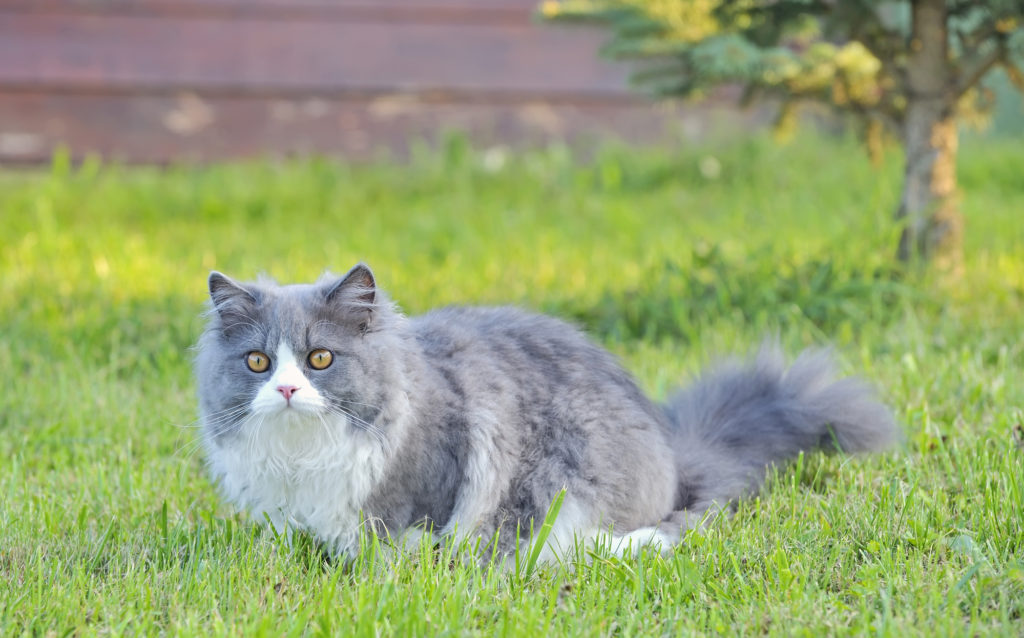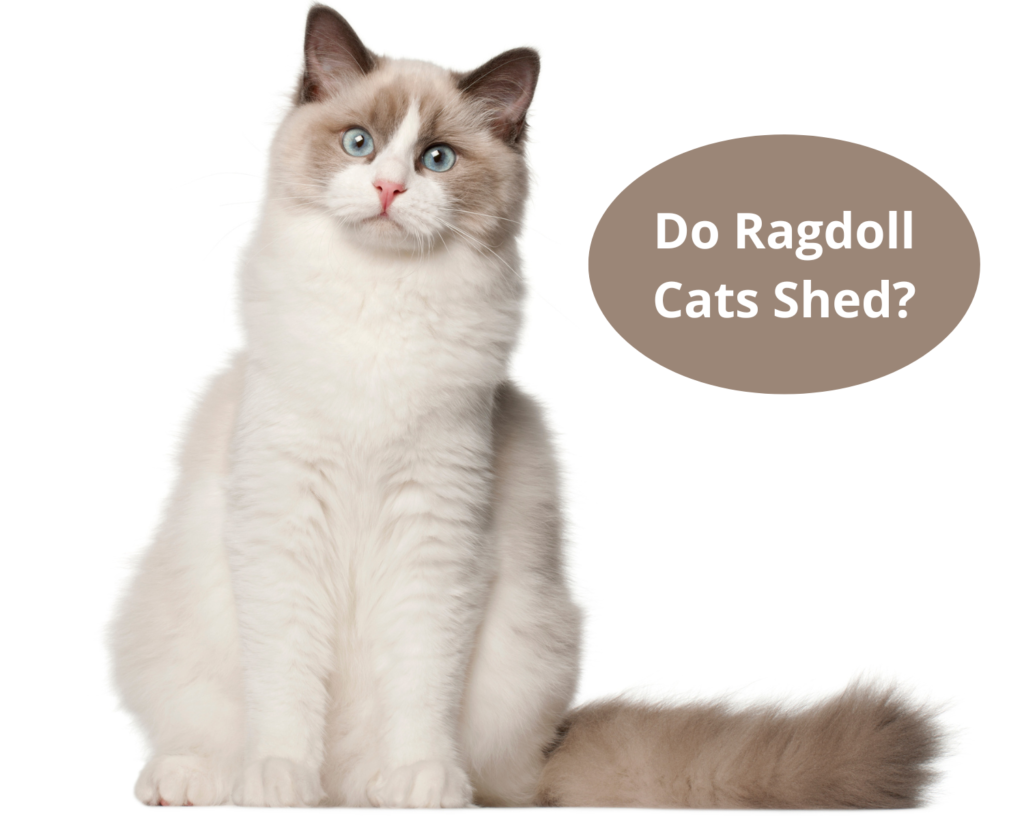Ragdoll cats are well-known for their friendly, almost dog-like personalities and their beautiful fluffy coats of long fur. Naturally, when you see a cat with such magnificent hair, you wonder about how much upkeep and maintenance is needed.
Do Ragdoll cats shed, and if so, how much? Read on to learn more!
Do Ragdoll Cats Shed?
Ragdoll cats, like any long-haired cats, do shed fur regularly. All long-haired cats are going to shed regardless of breed, so this simply comes with the nature of owning these cats.
How Much Do Ragdoll’s Shed?
Despite their long coats, Ragdoll cats shed less than their fellow long-haired breeds. This is because they don’t have an undercoat.
You’ll still see a fair bit of fur around your home, but it won’t be too overwhelming as long as you’re cleaning regularly.
It’s difficult to provide an accurate estimate of how much a Ragdoll is going to shed. The truth is that each individual Ragdoll cat is likely to shed a different amount.
Many factors further affect how much a cat will shed.
The most significant factor here is diet. A poor diet will cause a Ragdoll to shed more. Malnourished cats often experience a lot of hair loss, while healthy ones will maintain a nice, thick coat that doesn’t drop as often.
The frequency of grooming also affects the shedding amount. Regular grooming done frequently will get rid of loose fur on the coat, thus reducing the total amount of shedding.
Finally, an outdoor Ragdoll cat will shed less indoors due to some of their shedding occurring while they are outside the house.
Are Ragdoll Cats Hypoallergenic?
You’ve probably heard a few people say that Ragdoll cats are hypoallergenic. However, this is far from the truth. If you have a severe cat allergy, Ragdoll cats are likely not going to be suitable for you!
There are a few caveats to this, of course. To begin with, Ragdolls don’t have an undercoat. Those with mild fur allergies are often primarily allergic to undercoat fur, so if that’s the case for you, Ragdoll cats might not trigger these allergies.
Secondly, a majority of people who are allergic to cats aren’t allergic to fur, but to dander. Dander refers to the dried saliva of cats that sticks onto their fur after they do their grooming activities.
Ragdolls don’t produce that much dander and may, therefore, be more tolerable to someone with a dander allergy.
Regardless, if you think you have a cat allergy, you’ll need to spend a little time with a Ragdoll to determine if you’ll be affected by their fur or dander.
Do Ragdoll Cats Shed More Or Less During Certain Seasons?
Ragdolls typically shed twice a year, though the exact time will depend on when you live. Essentially, they have a thicker coat of fur in winter and a thinner coat of fur in summer.
This means that they shed their thin summer coat in autumn to regrow thicker winter fur, and they shed their thick winter coat in spring to regrow thinner summer fur.
With that being said, a strictly indoor Ragdoll cat may not experience this seasonal shedding. Being inside all the time can cause animals to lose track of the changing of the seasons. As such, the cat may end up shedding lightly throughout the year.

Mild climates without seasonal changes will also cause a Ragdoll to shed throughout the year. Without any seasons to follow, these cats will just shed lightly constantly. In this event, you’ll need to clean fur more often.
Another factor involved here is the heating or air conditioning of your house. If you always have central heating on, your Ragdoll cat is likely to shed more excessively, as the environment will make it think that it’s time to prepare a summer coat.
4 Ways To Best Deal With A Shedding Cat
1. Groom And Brush Regularly
When fur gets loose, it doesn’t usually immediately drop to the ground. Instead, it tends to slowly loosen and get stuck in the rest of a cat’s fur. Eventually, these loose hairs will drop and stick to all your furniture.
You can stop the loose fur from breaking free and infiltrating your home excessively by regularly grooming a Ragdoll cat. Brushing a cat’s fur helps to detangle hair while also removing any loose fur that is clinging on.
You’ll effectively prevent the hair from reaching the point where it sheds by removing loose fur beforehand.
A simple metal comb can be sufficient for most Ragdoll grooming needs. A slicker brush is highly recommended for really getting rid of all of that loose fur!
A quick once over once a day during shedding season and every few days during non-shedding seasons can work wonders.
You can also send your cat for grooming services regularly for a professional touch-up that’ll keep shedding at bay. Be sure not to have your cat bathed or shampooed too often, though, as it’ll dry a Ragdoll’s skin!
2. Get Good-Quality Cleaning Supplies
If you have pets that shed regularly, a quality vacuum cleaner is a very worthwhile investment.
A simple handheld one works just fine for getting fur out of furniture, but larger vacuums can make quick work of all the fur in your house if that’s in your budget.
Lint rollers can be a relatively workable solution too. There are also convenient brushes designed specifically to remove cat and dog fur that you can find both online and in pet stores.
For upholstered furniture, you can also use nothing more than a rubber glove. Put the glove on, dampen it a little, and then rub the glove over the furniture in question. Fur will stick to the glove easily and will no longer plague your upholstery!
3. Feed Your Ragdoll Fish Oil
Diet is an important part of managing a Ragdoll’s shedding fur.
A healthy diet is a given and goes without saying, of course. But if the shedding is still profuse, consider using a fish oil supplement designed for cats!
Fish oil is filled with omega-3 fatty acids that are perfect for reducing shedding and maintaining a healthy, shiny coat.
Not only with your Ragdoll’s fur be more lustrous, but it’ll also be easier to care for and won’t fall out as easily. Some cats will dislike the taste, so be ready to mask it with other flavors!
Do note that you should always check with your vet before giving your cat any kind of supplement, even when the supplements are made for cats.
4. Get Used To It
Here’s a simple fact: you’re going to need to get used to having fur around if you want a Ragdoll cat – or any long-haired cat, for that matter!
While you can clean often and brush and groom well to reduce the severity of shedding, you’re always going to have a little bit of Ragdoll hair on your furniture and clothes. That’s just a part of owning these lovely cats!
If you’re not up for a life spent with cat fur on most of your belongings, chances are that long-haired cats aren’t the right fit for you.
One of the best ways to deal with shedding is to simply accept it as a new part of your life – a fitting trade for the loving companionship of your furry pets!
Conclusion
Ragdoll cats don’t shed as much as other long-haired cat breeds, but they do still shed quite a bit. They’re not hypoallergenic and they shed seasonally, those indoor temperatures and unique climates can lead to year-round shedding.
If you need to deal with the shedding of a Ragdoll cat, you’ll need good cleaning supplies and regular grooming, and you may want to consider a fish oil supplement!

